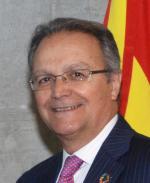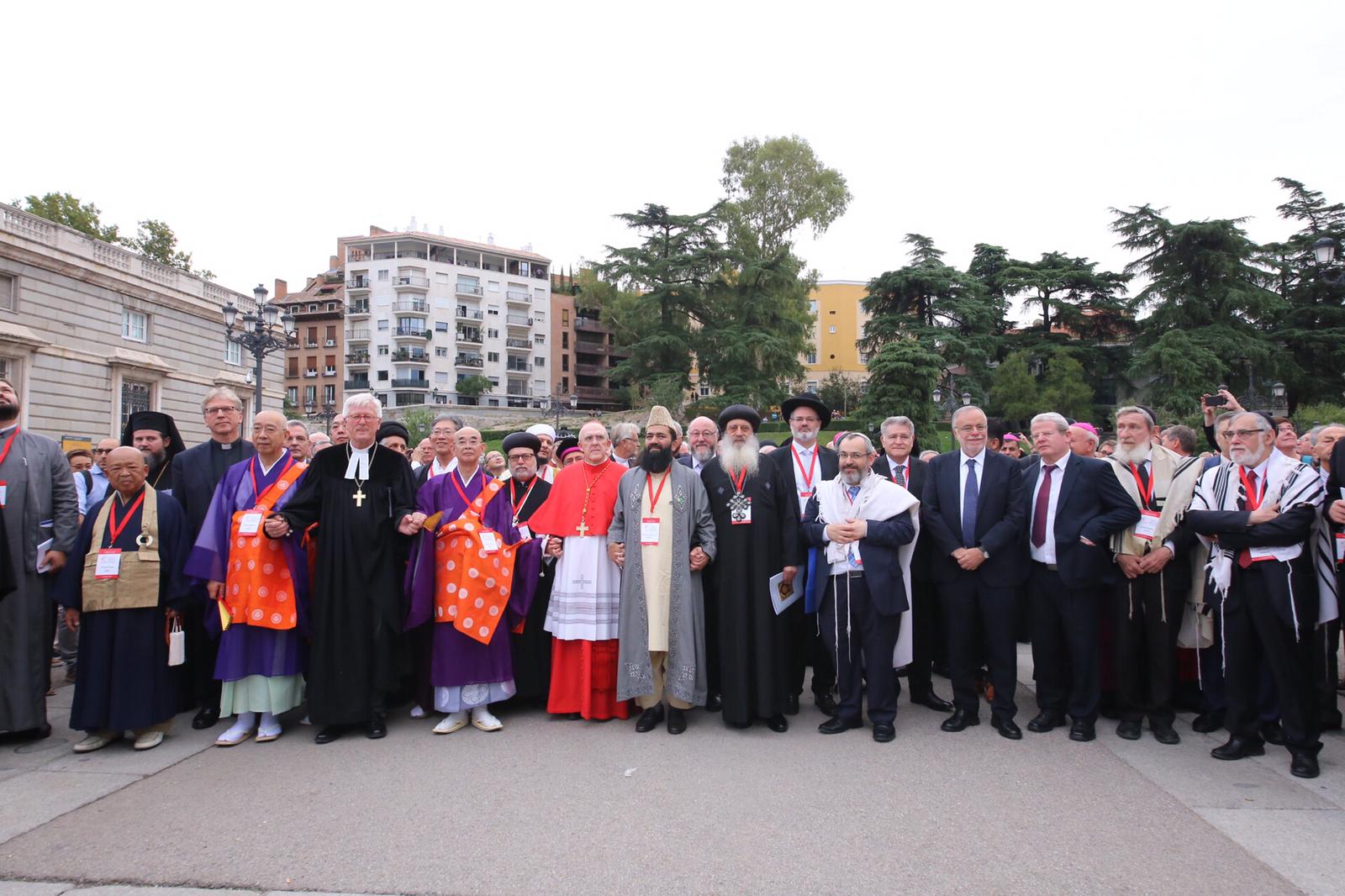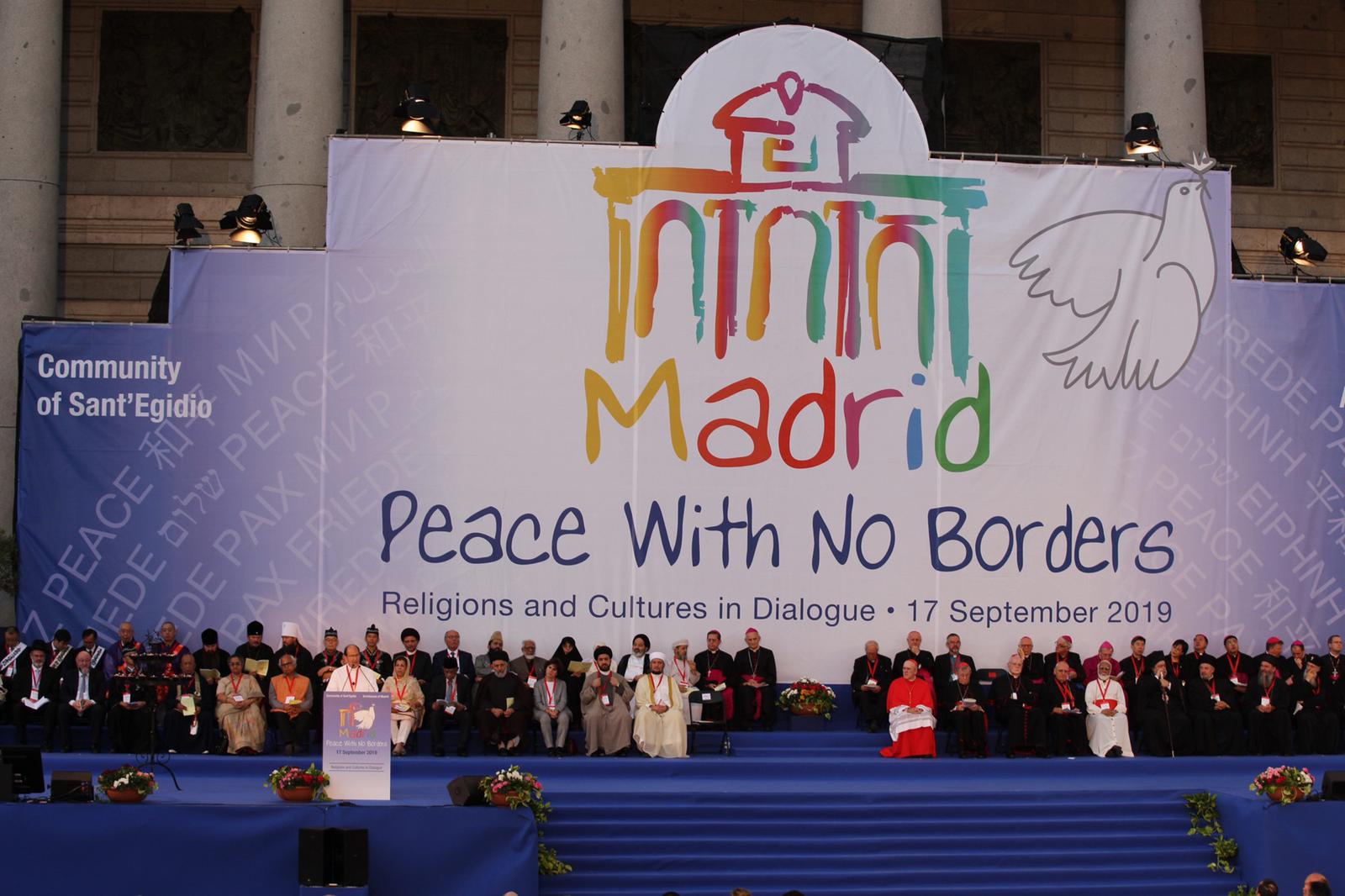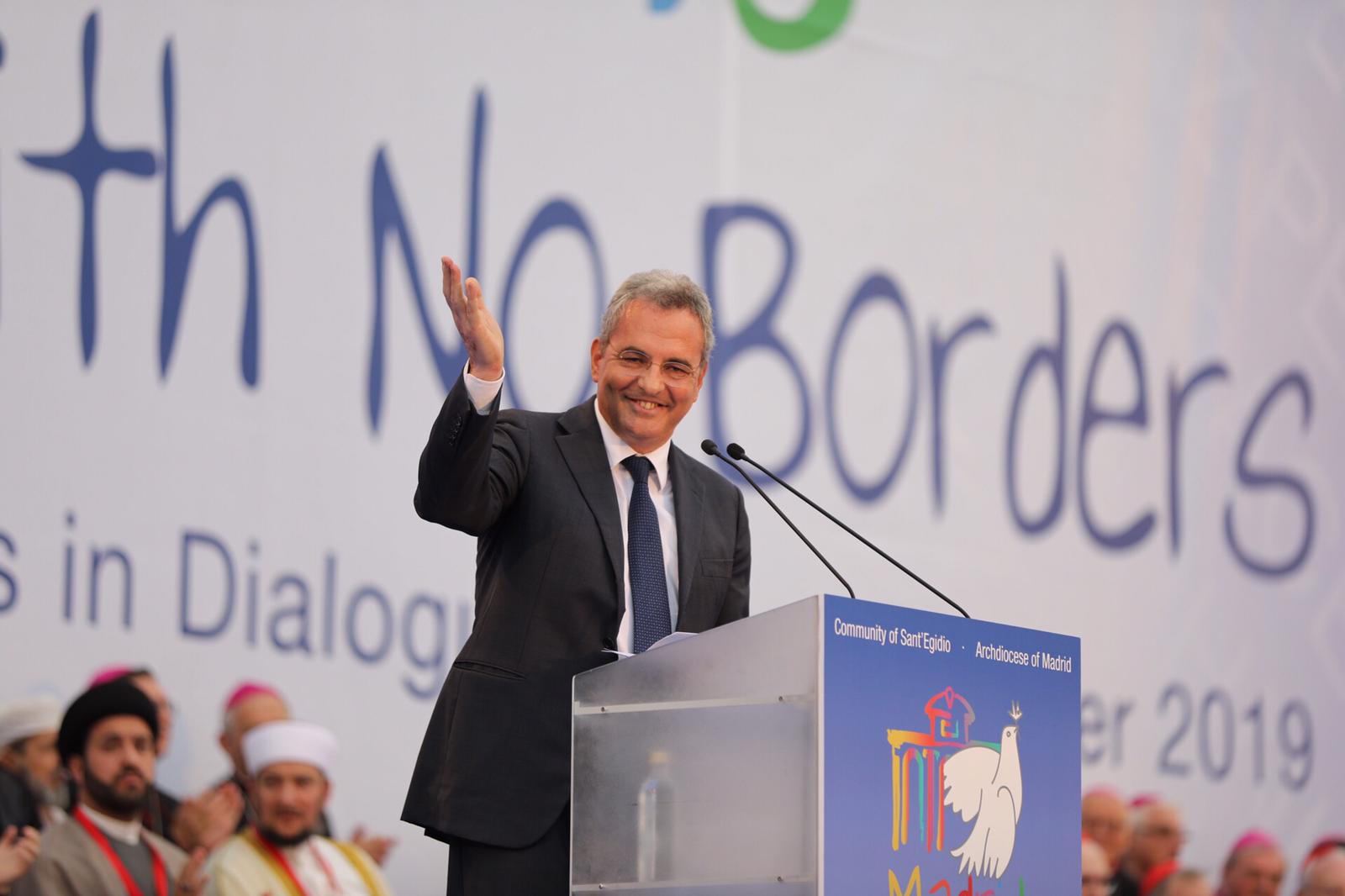16 September 2019 10:00 | Universidad Eclesiástica San Dámaso, Aula Pablo Domínguez
Speech of Juan Pablo de Laiglesia

In the past 30 years, more countries have been afflicted by some type of violent conflict than in any other era. Crises and conflicts are becoming increasingly complex; they are frequently transnational, recurrent, at risk of becoming entrenched, and can be exacerbated by threats such as environmental degradation and climate change, and by other phenomena including migration and new technologies.
The OECD's 2018 States of Fragility report estimates that almost 50 percent of the 836 million people enduring situations of extreme poverty live in fragile contexts, and that this percentage will have risen to 80 percent by 2030. Moreover, the number of displaced persons in the world now exceeds 65 million, almost twice what it was 20 years ago.
In 2016, 68.2 million dollars—65.5 percent of official development assistance— was allocated to fragile contexts, compared with 35.8 million earmarked for non-fragile contexts. However, despite international cooperation efforts, violent conflicts have continued to increase. Consequently, funding for humanitarian action is being outstripped by growing needs, and close to 90 percent of humanitarian assistance is currently allocated to prolonged crises.
In the face of the proliferation and prolongation of humanitarian crises, with all that they entail, the triple nexus between humanitarian aid, development and peace as increasingly been gaining traction in the sphere of development cooperation, due to the understanding that bolstering the ties between international relations, development, and humanitarian action is key to averting tensions and preventing the prolongation of crises. This approach presupposes that it is ultimately necessary for foreign policy, security, development, and humanitarian instruments to function together in a coordinated manner.
From a practical standpoint, there are areas in which this collaboration is effective, such as the impact of early warning mechanisms on different crises, or civilian-military coordination, which in many contexts can improve access for humanitarian actors.
However, it is important to ensure that humanitarian principles are not jeopardized, and that the respective mandates, legal frameworks, and instruments are not tampered with. Similarly, we must always keep in mind that humanitarian assistance must be provided in accordance with the principles of humanity, neutrality, impartiality, and independence.
As regards peacebuilding, the number of plans and proposals has multiplied, above all within the United Nations. UN initiatives include the International Dialogue on Peacebuilding and State-Building, which provides a platform for bringing together countries affected by conflict and fragility with international associations; the Peacebuilding Fund; and the joint study of the UN and the World Bank, Pathways for Peace, which has become a key reference work on conflict prevention.
Despite some positive experiences, specific advances in the effectiveness of the peacebuilding-security nexus have been relatively modest, largely due to the proliferation and prolongation of humanitarian crises.
This situation began to change with the launch of the 2030 Agenda for Sustainable Development in 2015, and the efforts to meet the Sustainable Development Goals [SDGs], such as SDG 16 on peace, justice and strong institutions. The Agenda emphasizes the need for work in these areas to be carried out in an increasingly integrated manner, bringing together the different instruments that impact on people in developing countries.
From a humanitarian perspective, the nexus between humanitarian, development, and peacebuilding actions was addressed during the same year that the 2030 Agenda was approved, and was given significant impetus by the World Humanitarian Summit in Istanbul in 2016. One of the main lines of action at this Summit focused on the need to promote collaboration between humanitarian and development actors, in keeping with the UN message on “breaking down silos”.
The European Union has also joined the discussion. In May 2017, the Foreign Affairs Council adopted conclusions on “operationalizing” the humanitarian-development nexus in order to define specific channels of cooperation between humanitarian and cooperation actors, while continuing to respect humanitarian principles (impartiality, neutrality, independence, and humanity).
There is consensus among EU Member States on the need for joint analysis of crises; however, there is less consensus regarding the joint planning and programming of funds. The structural differences of the Member States have a bearing on such cooperation. In the case of Spain, coordination is facilitated by the inclusion of the Humanitarian Action Office within the organizational structure of AECID, the Spanish Agency for International Development Cooperation.
For its part, on 22 February 2019, OECD’s Development Assistance Committee [DAC] and its member states adopted the Development Assistance Committee’s Recommendation on the Humanitarian–Development-Peace Nexus. Spain participated actively in the debates on this initiative, and is fully committed to its implementation. In addition, Spain participates in the International Network on Conflict and Fragility.
The DAC Recommendation is based on three pillars relevant to the implementation of the Humanitarian-Development- Peace-Security nexus:
1. Improve coordination through joint analysis of the root causes and structural drivers of conflict and use political dialogue and other tools, instruments and approaches at all levels to prevent crises, resolve conflicts, and build peace.
2. Prioritize prevention, mediation, and peacebuilding, investing in development wherever possible, while at the same time ensuring that immediate humanitarian needs are met. Put people at the centre, tackling exclusion, and promoting gender equality. Strengthen national and local capacities and investing in learning across humanitarian, development, and peace actions.
3. Design humanitarian, development and peace financing strategies through initiatives that prioritize funding local organizations which are already on the ground when crises hit, as they are usually the first to respond and have specialist knowledge and skills. Work on an international scale with multilateral partners, public administrations, the private sector, and civil society, focussing on countries at the greatest risk of recurrent and prolonged crises to align resources as closely as possible to needs. Use official development assistance as a catalyst to mobilize public, private, national and international flows, ensuring that they do not contribute to conflict, inequality, or instability.
In the specific case of Spanish Cooperation, our experience in the analysis of resilience-building is highly relevant to the development-peace nexus. This approach is set forth in Spanish Cooperation’s 2018 publication Construcción de Resiliencia para el Bienestar, which in English would be Building Resilience for Well-being. The resilience-building approach entails a comprehensive study of communities’ needs that does not distinguish between humanitarian action and development cooperation, but rather asks which instruments—and in what combination—are most appropriate to the actual situation at any given time.
This study paved the way for the commitment set out in Spanish Cooperation’s Master Plan for 2018-2021 to “improve the connection and collaboration between humanitarian and development action, which is fundamental to promoting resilience; disaster prevention, mitigation and preparedness; and lasting solutions for refugees, internally displaced persons and migrants”.
This commitment is also reflected in one of the three strategic lines of Spanish Cooperation’s Humanitarian Strategy for 2019-2026, which addresses the need to improve the complementarity of humanitarian action and development initiatives. This strategy is being revised to build upon the gender approach in humanitarian action, in line with the World Humanitarian Summit, the Call to Action on Protection from Gender-Based Violence in Emergencies, and other commitments undertaken by Spain.
Together with this Strategy, Spanish Cooperation has also prepared two sector-specific strategies, the Gender in Development Strategy, which encompasses the empowerment of women in peace processes and humanitarian action as a cross-cutting element of all its objectives, and the Peacebuilding Strategy of Spanish Development Cooperation.
Spain understands how critical it is that attention be directed towards scenarios of prolonged crisis (especially forgotten crises), with a new strategic approach based on comprehensive viewpoints.
In addition, our country has extensive experience in mediation and conflict prevention initiatives, such as the peace process in Colombia. We must be ambitious on this point, stepping up advocacy and awareness-raising on humanitarian issues in order to have an impact on the political agenda. The humanitarian agenda frequently ends up “picking up the tab” for political actors; ultimately, we must also seek to make progress in the age-old debate on policy coherence.
In the rural areas of Colombia, I have heard the local people say that “there can be no peace where there is hunger”. This simple yet complex expression reflects the dichotomy that brings us here today: without development there is no peace, and without peace there can be no development. And the path to making this nexus effective is set by the 2030 Agenda, encompassing as it does both sustainable development and humanitarian action. We must meet the targets of Sustainable Development Goal 16: to build effective, accountable, and inclusive institutions at all—and I repeat, all—levels.
Thank you very much.





